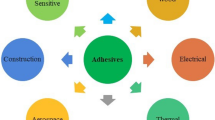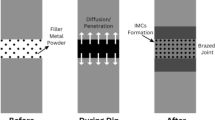Abstract
Aramid Aluminum laminates (ARALLs), which belong to the family of fiber metal laminates (FML’s) are prone to interlaminar shearing because of weak bonding between Aluminium and Kevlar layers. Moreover standard fabrication procedure of these composites is to use unidirectional fiber prepregs with Aluminium alloy sheets. The fabrication thus involves expensive semi prepared materials (prepregs) followed by autoclaving. Over the recent years VARTM (Vacuum assisted resin transfer molding) has emerged as a viable and low cost technique for composites fabrication. In this paper an alternative fabrication procedure for ARALL composites using VARTM has been presented. For this purpose Aluminium 2024 T3 alloy and plain woven Para-Aramid (Kevlar 49 from DuPont) fibrous tow sheets were used to make ARALL composites. ARALL comprises of one sheet of Kevlar in the center and two layers of Aluminum on its two sides. Two types of Aluminium sheets were prepared i.e., anodized and unanodized. Specimens were prepared using VARTM technology. Two types of post curing treatments were chosen. One group of specimens was post cured at 100 °C while the other group was left to cure at room temperature. T-peel tests were then conducted using ASTM D1876 standard on ARALL specimens thus prepared. This research study entails anodization and curing/post curing for enhancement of interfacial bonding so as to suppress interfacial debonding. Various parameters in this respect have been varied and their effect on the interfacial bond strength and thus on the Mode-I fracture toughness has been quantized. Experimental results, electrochemical characterization and optical/SEM observations of delaminated surfaces have established that anodization coupled with post curing results in an optimized interface between Aluminium alloy and Para-Aramid sheets. The optimization scheme described in this paper can be used to manufacture ARALL composites through low cost VARTM technology.























Similar content being viewed by others
References
Marissen R (1989) Mechanical aspects related to fibre fracture in ARALL® 2 laminates. In: Advances in Fatigue Science and Technology. Springer, pp 697–707
Vogelesang LB, Gunnink JW (1983) ARALL, a material for the next generation of aircraft: a state of the art. University of Technology
Lee SM (1992) Handbook of composite reinforcements. John Wiley & Sons
Nowack H, Marissen R (1988) Recent aspects of crack propagation analyses under variable amplitude loading conditions and prediction methods. Int J Mater Prod Technol 3(1):104–119
Verbruggen M (1984) Durability of ARALL. Delft University of Technology
Gunnink JW (1988) Design studies of primary aircraft structures in ARALL laminates. J Aircr 25(11):1023–1032
Botelho EC, Silva RA, Pardini LC, Rezende MC (2006) A review on the development and properties of continuous fiber/epoxy/aluminum hybrid composites for aircraft structures. Mater Res 9(3):247–256
Gunnink JW (1988) Damage tolerance and supportability aspects of ARALL laminate aircraft structures. Compos Struct 10(1):83–104
Soden PD, Hinton MJ, Kaddour AS (1998) Lamina properties, lay-up configurations and loading conditions for a range of fibre-reinforced composite laminates. Compos Sci Technol 58(7):1011–1022
Prasad MSS, Venkatesha CS, Jayaraju T (2011) Experimental methods of determining fracture toughness of fiber reinforced polymer composites under various loading conditions. J Miner Mater Charact Eng 10:1263
Davis JR (1993) Aluminum and aluminum alloys. ASM international
Mondolfo LF (1976) Aluminum alloys: structure and properties, vol 5. Butterworths London
Marissen R (1988) Fatigue crack growth in ARALL, A hybrid aluminium-aramid composite material: Crack growth mechanisms and quantitative predictions of the crack growth rates. Technische Universiteit Delft
Park SY, Choi WJ, Choi HS, Kwon H, Kim SH (2010) Recent trends in surface treatment technologies for airframe adhesive bonding processing: a review (1995–2008). J Adhes 86(2):192–221
Davis MJ Bonded Repairs: Principles and Practice. In: International Conference on Aircraft Damage Assessment and Repair: 1991; Preprints of Papers, 1991. Institution of Engineers, Australia, p 92
http://www.on-hand.com/Manuals/SurfacePreparation.pdf. (2014). Accessed 11 June 2014
Baldan A (2004) Adhesively-bonded joints and repairs in metallic alloys, polymers and composite materials: adhesives, adhesion theories and surface pretreatment. J Mater Sci 39(1):1–49
Critchlow GW, Brewis DM (1996) Review of surface pretreatments for aluminium alloys. Int J Adhes 16(4):255–275
Wegman RF, Van Twisk J (2012) Surface preparation techniques for adhesive bonding. William Andrew
http://infohouse.p2ric.org/ref/02/01433.pdf. Accessed 11 June 2014
http://www.wpi.edu/Pubs/E-project/Available/E-project-031609-134903/unrestricted/Henkel_Final_MQP.pdf. Accessed 12 June 2014
Nagao Y, Iwahori Y, Hirano Y, Aoki Y (2007) Low cost composite wing structure manufacturing technology development program in JAXA. In: Proceedings of the 16th International Conference on Composite Materials (ICCM-16), Paper No. MoAM1-05pl
Takeda F, Nishiyama S, Hayashi K, Komori Y, Suga Y, Asahara N (2005) Research in the application of the VaRTM technique to the fabrication of primary aircraft composite structures. Mitsubishi Heavy Industries Technical Review 42 (5)
O’Donnell A, Dweib MA, Wool RP (2004) Natural fiber composites with plant oil-based resin. Compos Sci Technol 64(9):1135–1145
Mathuw R, Advani SG, Heider D, Hoffmann C, Gillespie JW, Fink BK (2001) Flow front measurements and model validation in the vacuum assisted resin transfer molding process. Polym Compos 22(4):477–490
Loos AC, Tuncol G, Long K, Cano RJ, Jensen BJ, Weiser ES (2009) Flow visualization and modeling of the resin infusion process during manufacture of fiber metal laminates by VARTM. Paper presented at the ICCM 17, Edinburgh, U.K., 27–31 July 2009
Jensen BJ, Cano RJ, Hales SJ, Alexia A, Weiser ES, Loos AC, Johnson WS (2009) Fiber metal laminates made by the VARTM process. Paper presented at the ICCM 17, Edinburgh, U.K., 27–31 July 2009
Biggs Jr RW, Bodepudi VP, Ferrell MG, Seal EC (1995) Method for forming composite structures
Verbruggen MLCE (1987) Aramid reinforced Aluminum laminates: ARALL adhesion problems and environmental effects. Faculty of aerospace engineering, Delft university of technology
Saeedikhani M, Javidi M, Yazdani A (2013) Anodizing of 2024-T3 aluminum alloy in sulfuric-boric-phosphoric acids and its corrosion behavior. Trans Nonferrous Metals Soc China 23(9):2551–2559
Rybicki EF, Kanninen MF (1977) A finite element calculation of stress intensity factors by a modified crack closure integral. Eng Fract Mech 9(4):931–938
Author information
Authors and Affiliations
Corresponding author
Rights and permissions
About this article
Cite this article
Qaiser, H., Umar, S., Nasir, A. et al. Optimization of interlaminar shear strength behavior of anodized and unanodized ARALL composites fabricated through VARTM process. Int J Mater Form 8, 481–493 (2015). https://doi.org/10.1007/s12289-014-1192-9
Received:
Accepted:
Published:
Issue Date:
DOI: https://doi.org/10.1007/s12289-014-1192-9




